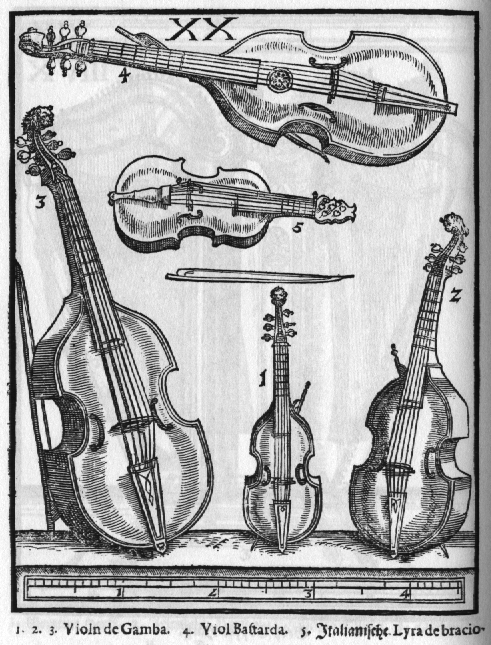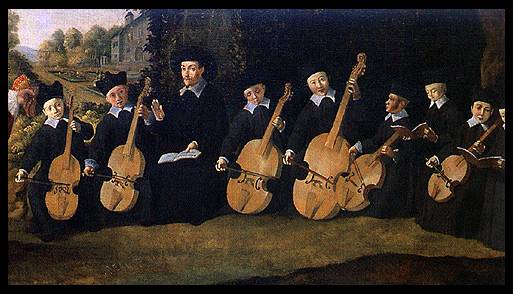About the viol
The origin of the viola da gamba is still the subject of study, but scholars agree that this instrument is not the predecessor or parent of the violin family, which had a concurrent but completely separate development. It is also known that the viol began to take its final form in the late 15th century in Italy and was established in England during the reign of Henry VIII where we see the beginning of the English fascination with Italian music. It became the most popular of all 16th and 17th century instruments, and most wealthy households owned their own chest of viols. Music for viol consort included dance music, the contrapuntal fantasy form, and madrigal forms.

The viol comes in several sizes, similar to the violin family, but all are held between the legs ("gamba" means leg in Italian), and the bow is held underhand, as if holding a spoon. It also has frets, which are not set into the wood as with a guitar, but are made by tying thin gut strings around the fingerboard. Other differences to the violin family include sloping shoulders, a flat back, "C"-shaped sound holes as opposed to "F"-shaped sound holes, carved heads (animal or human) instead of a scroll, and six strings, as opposed to four. The strings are tuned similar to a lute, in fourths with one third. The largest of the family, the violone, became the modern double bass, and even the underhand bowing technique is still used by some classical bass players today. The solo instrument of the viol family is the bass viol (which is similar in size to the cello), the other sizes are used primarily for ensemble playing, with the exception of the treble and pardessus (the smallest and highest-sounding), which were favored as solo instruments in the French courts during the late 17th century.
Because of its
delicate sound, the instrument lost favor towards the middle of the 18th
century, as orchestral music gained popularity. J.S. Bach wrote three
sonatas for harpsichord and bass viol, and included the viol as a solo
instrument in several of his cantatas and passions, his son Carl
Philippe Emanuel also wrote three sonatas for keyboard and bass viol,
but later generations focused solely on works for instruments of the
violin family. It wasn't until the 20th century, with the interest in a
revival of early instruments and their repertoire, that the viol became
popular again, particularly among avid lay players.

Make a free website with Yola